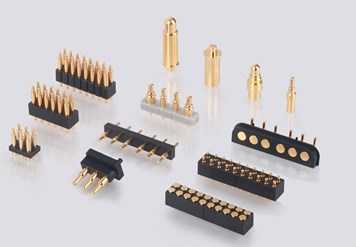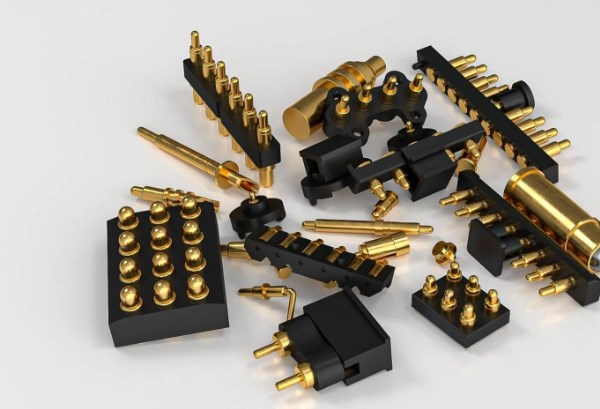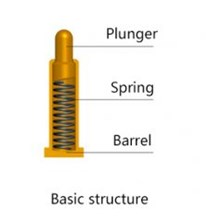OUTLINE:
How to Use Pogo Pins Properly [Important]
 489
489In the dynamic world of electronics and DIY projects, reliable electrical connections are crucial for seamless functionality. One indispensable tool in achieving this is the humble yet powerful Pogo Pin.
In this guide, we'll learn about how to use Pogo Pins, exploring their applications, advantages, and providing step-by-step insights on how to harness their potential for optimal electrical connectivity.

What Are Pogo Pins
Pogo Pins, often referred to as spring-loaded contacts, stand as essential components in the realm of electronics and engineering.
These small, spring-loaded connectors play a pivotal role in establishing reliable electrical connections between various components in electronic devices.
Unlike traditional fixed connectors, Pogo Pins offer a unique spring-loaded mechanism that enables secure and repeatable connections even in dynamic or challenging environments.
Comprising a plunger, barrel, and spring mechanism, Pogo Pins are designed to provide a temporary electrical connection when pressed against a target surface.
Their versatility makes them invaluable in scenarios where traditional connectors may fall short. From testing and programming applications to serving as charging ports and board-to-board connections, Pogo Pins find widespread use in diverse electronic projects.

Does the Pogo Pin Save Cost
Yes, the Pogo Pins are a cost-effective alternative for low-quantity non-standard connectors.
Unlike traditional connectors produced through stamping, Pogo Pins are made using a turning process, eliminating the expensive mold fee. Incorporating the mold fee can significantly increase the final price per connector.
How Does A Pogo Pin Work
The functionality of a Pogo Pin is rooted in its ingenious design, which consists of a plunger, barrel, and spring mechanism. Understanding how these components interact provides insight into how a Pogo Pin works:
- Plunger:
The plunger is the exposed, movable part of the Pogo Pin.
It contains a conductive tip that makes contact with the target surface when pressure is applied.
- Barrel:
The barrel surrounds the plunger and serves as a housing for the spring mechanism.
It provides structural support and guides the plunger's movement.
- Spring Mechanism:
The spring mechanism is a crucial element that enables the Pogo Pin's spring-loaded action.
Compressed when pressure is applied, the spring stores potential energy.
When the pressure is released, the spring pushes the plunger back to its initial position.

The working process can be broken down into steps:
a. Contact Establishment: - When force is applied to the plunger, the conductive tip makes contact with the target surface. - This creates a temporary electrical connection between the Pogo Pin and the target.
b. Spring Compression: - As the plunger is pressed, the spring inside the barrel compresses, storing potential energy.
c. Release of Pressure: - When the external force is removed, the spring decompresses, pushing the plunger back to its original position. - The conductive tip loses contact with the target, breaking the electrical connection.
How to Properly Use Pogo Pins
Properly using Pogo Pins involves careful consideration of their application, correct alignment, and attention to electrical connections. Here's a step-by-step guide on how to use Pogo Pins effectively:
- Identify application purpose.
- Select suitable Pogo Pins based on size, current capacity, and environment.
- Ensure correct alignment for reliable electrical connections.
- Securely mount Pogo Pins to prevent movement.
- Choose the appropriate spring force to establish contact without causing damage.
- Verify electrical connections using testing tools.
- Account for tolerances in design for consistent connections.
- Periodically clean Pogo Pins to maintain performance.
- Follow manufacturer guidelines for handling, usage, and maintenance.
Tips for Avoiding Damage to Pogo Pins During Use
Preventing damage to Pogo Pins during use is essential for maintaining their functionality and ensuring reliable electrical connections. Here are some tips to help you avoid damage to Pogo Pins:
1. Proper Alignment:
Ensure accurate alignment of Pogo Pins with the target surface. Misalignment can lead to increased friction, excessive force, and potential damage to the pins.
2. Correct Spring Force:
Select Pogo Pins with an appropriate spring force for your application.
Using pins with too much force can cause damage to the target surface, while insufficient force may result in poor electrical contact.
3. Mind Tolerances:
Design your setup with tolerances in mind. Pogo Pins are designed to accommodate variations in surface height and misalignment, but it's important to consider these factors in your overall design to prevent undue stress on the pins.
4. Avoid Excessive Side Load:
Minimize lateral or side loads on Pogo Pins during application. Excessive side forces can cause bending or deformation, leading to reduced lifespan and potential damage.
5. Stable Mounting:
Securely mount Pogo Pins in place to prevent unnecessary movement during use. Stability is crucial for preventing stress on the pins and maintaining proper alignment.
6. Appropriate Materials:
Choose Pogo Pins and target materials that are compatible in terms of hardness and conductivity. Mismatched materials can result in wear and damage over time.
7. Regular Cleaning:
Periodically clean the Pogo Pins to remove debris, oxidation, or other contaminants that can affect their performance. Use a non-abrasive cleaner and ensure the pins are dry before use.
8. Avoid Over-Compression:
Be cautious not to over-compress the springs in Pogo Pins. Excessive compression beyond their designed range can lead to deformation and loss of spring force over time.
What Are Pogo Pins Used for
Pogo pins, also known as spring-loaded pins or spring probes, are versatile components widely used in various electronic applications. Here are some common uses for Pogo pins:
- Testing and Programming:
Pogo pins are frequently employed in test fixtures and programming adapters for electronic devices.
Their spring-loaded action allows for quick and reliable electrical connections during testing and programming phases.
- Board-to-Board Connections:
Pogo pins facilitate temporary electrical connections between different circuit boards, enabling communication or data transfer in devices with modular or interchangeable components.
- Charging Ports:
Pogo pins are utilized in some devices, such as smartphones and wearable gadgets, as connectors for charging docks.
They provide a reliable and efficient means of transferring power between the device and the charging station.
- Connectorless Interfaces:
In certain applications, Pogo pins replace traditional connectors, offering a connectorless interface.
This is common in situations where a physical connector may be impractical or vulnerable to environmental factors.
- Sensor Interfaces:
Pogo pins are used in sensor applications to establish temporary connections for calibration, configuration, or data retrieval.
This is particularly useful when sensors need to be removed or replaced periodically.

Final Verdict
Mastering the use of Pogo pins enhances the reliability of electrical connections in electronics projects. Whether for testing, programming, or charging, these versatile connectors offer a dynamic solution.
By ensuring proper alignment, selecting the right pins, and maintaining stability in mounting, you can maximize their potential. Pogo pins provide a flexible and efficient means of establishing temporary connections, making them invaluable in the realm of electronic connectivity.

Disclaimer: The views and opinions expressed by individual authors or forum participants on this website do not represent the views and opinions of Chipsmall, nor do they represent Chipsmall's official policy.

share this blog to:

